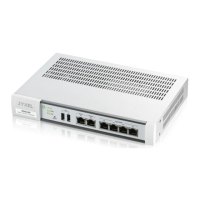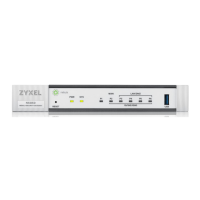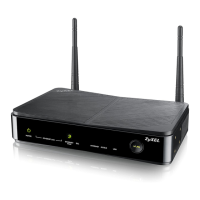Chapter 6 Configuration
NSG Series User’s Guide
26
Figure 28 SSH Example 2: Test
2 Enter “ssh –1 192.168.1.1”. This command forces your computer to connect to the NSG using SSH
version 1. If this is the first time you are connecting to the NSG using SSH, a message displays prompting
you to save the host information of the NSG. Type “yes” and press [ENTER].
Then enter the password to log in to the NSG.
Figure 29 SSH Example 2: Log in
3 The CLI screen displays next.
6.4 User
Use this screen to change your password of the user account “admin”. It is strongly recommended that
you change your NSG's password. To access this screen, click Configuration > User.
Note: The NSG’s login password is overwritten with what you have configured in the NCC
when the NSG is managed by the NCC.
Figure 30 Configuration > User
$ telnet 192.168.1.1 22
Trying 192.168.1.1...
Connected to 192.168.1.1.
Escape character is '^]'.
SSH-1.5-1.0.0
$ ssh –1 192.168.1.1
The authenticity of host '192.168.1.1 (192.168.1.1)' can't be established.
RSA1 key fingerprint is 21:6c:07:25:7e:f4:75:80:ec:af:bd:d4:3d:80:53:d1.
Are you sure you want to continue connecting (yes/no)? yes
Warning: Permanently added '192.168.1.1' (RSA1) to the list of known hosts.
Administrator@192.168.1.1's password:

